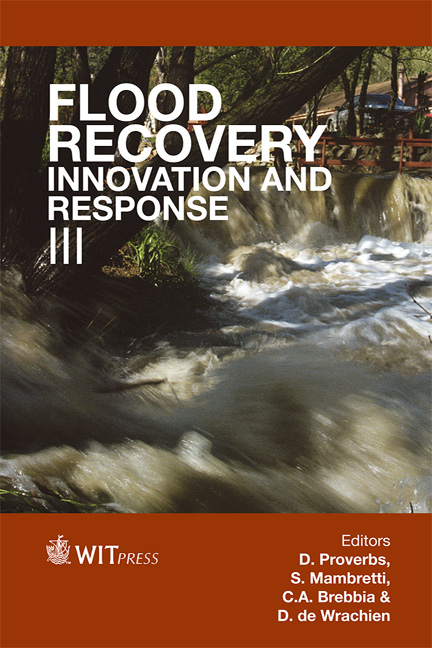Comparison Of A Data-driven Model And A Physical Model For Flood Forecasting
Price
Free (open access)
Transaction
Volume
159
Pages
10
Page Range
133 - 142
Published
2012
Size
1,828 kb
Paper DOI
10.2495/FRIAR120111
Copyright
WIT Press
Author(s)
J. Ji, C. Choi, M. Yu & J. Yi
Abstract
Flooding from torrential rain occurs in a short amount of time, while drought lasts for a longer period; the former may inflict huge losses in terms of both life and property. For these reasons, considerable research has been performed in the field of flood control system development. A physical model is mainly used for flood forecasting and warning. However, physical rainfall-runoff models for the conventional flood forecasting process require extensive information and data, and include uncertainties that can accumulate errors during the modeling process. On the other hand, ANFIS, which is a data-driven model combining the neural network and fuzzy techniques, can decrease the amount of physical data required for the construction of a conventional model and easily construct and evaluate a flood forecasting model using only rainfall and water level data. However, data-driven models have the disadvantage that they do not provide mathematical and physical logic, so that there are no logical correlations between the input and output data of the model. This study analyzes the characteristics of a data-driven model, ANFIS, according to its functional options and input data, such as changes in the clustering radius and the training data length. In addition, the suitability of ANFIS is evaluated through comparison with the results of HEC-HMS, which is widely used for rainfall-runoff models. In this study, the neuro-fuzzy technique is applied to the Cheongmicheon Basin using the observed precipitation and stream level data from 2008 to 2011. Keywords: ANFIS, HEC-HMS, neuro-fuzzy technique, flood forecasting.
Keywords
ANFIS, HEC-HMS, neuro-fuzzy technique, flood forecasting





